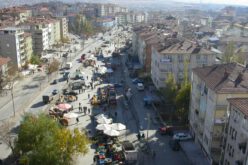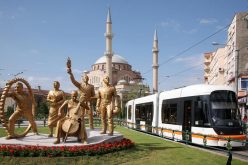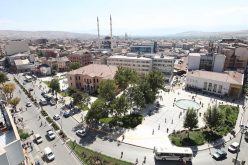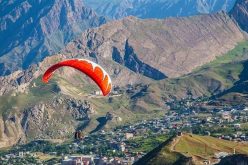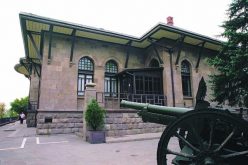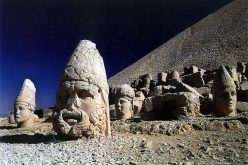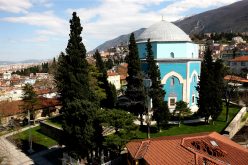Konya
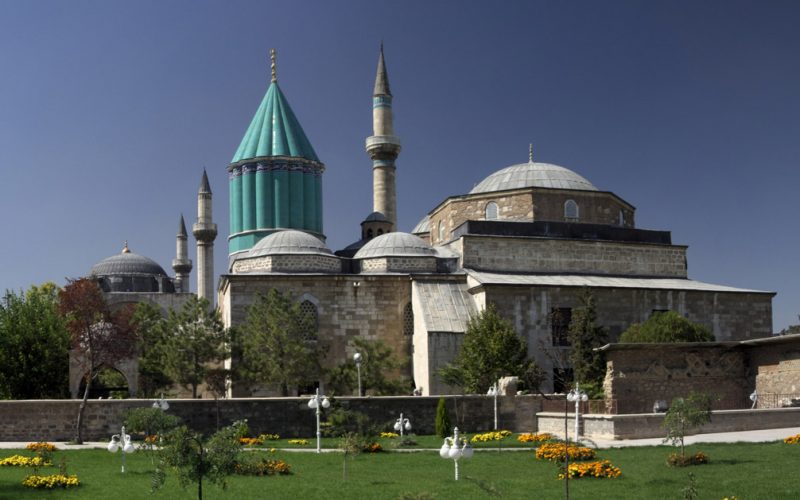
Konya
Konya is a city identified with the world famous philosopher Mevlana, it is one of the first inhabited cities in the history of mankind, and still contains traces of many ancient civilisations which gives it the atmosphere of a museum city. Because of its locations in the middle of the barren Anatolian steppe, it used to be one of the most important trading centres on the Silk Road. The fertile land around the city means Konya is also the heart of Turkey’s grain industry, with farming a major industry. Steeped in tradition, it is one of the most conservative and religious places in the country, and best known as the adopted home of Celaleddin Rumi, the Sufic mystic who founded the Whirling Dervish sect. Today it is still a centre of Sufic practice and teaching, and one of the highlights for visitors is the Mevlana Museum, the former lodge of the dervishes. Although Konya is one of the world’s most ancient cities, it is most famous as the capital of the Seljuk Sultanate of Rum from 1097 to 1243, when the city acquired most of the monuments of interest to the visitor. In addition to royal foundations of the Seljuks, Konya also attracted at this time the famous Islamic poet and philosopher Jalal al-din Rumi (1207-1273), the founder of the Mevlevi Sufi Order. After the fall of the Seljuk Sultanate, Konya continued to receive adornments from the rulers of near-by Karaman until the entire area was conquered by the Ottomans in 1468. Following the Ottoman conquest, Konya became a provincial capital and most of the Ottoman architecture in Konya consists of buildings originally dating from Seljuk or Karamanid times which were later rebuilt by the Ottomans. Today, Konya is one of Turkey’s major industrial cities, one of the rapidly growing “Anatolian tigers” of Turkey’s emerging industrial heartland. Konya has terrestrial climate with tough winters (cold and snowy) and hot and dry summers. Annual average temperature is 11.5°C. The hottest temperature is 40°C and the lowest is -28.2°C. There is fog for about 23 days and annual average rainfall is 326 mm.
Places to Visit ;
Mevlana Museum/Mausoleum of Rumi (in Turkish ‘Mevlana Müzesi’), This must see tourist destination of Konya, is the tomb of the famous mystic/sufi/thinker Rumi (known shortly as Mevlana in Turkish, or with the full name Mawlana Jalal ad-Din Muhammad Balkhi-Rumi in English literature), as well as the neighboring museum that displays relics of his life and his time. The items on display in the museum range from old manuscripts, hand written copies of the Koran, musical instruments used at Rumi’s time, as well as numerous art works dating from the Seljuk era. Unfortunately, unless you’re islamic or an islam enthusiast, you won’t appreciate what’s exposed, however it’s worth a walk. Also interesting for the curious traveller, esp. for those looking for interesting photographic opportunities or a short walk through an authentic neighborhood, is the parts of the city that surrounds the Mevlana Museum. Since this neighborhood hasn’t quite kept up with recent times, it still maintains an authentic feel from older days with narrow streets and houses of old architecture, almost with historic significance. Located 5-6 city blocks away from the museum, one can also find other historic buildings and mosques dating from the 12th and 13th century Seljuks Turks (the most significant one of these if the “İplikçi Camii”). Iplikçi Mosque (İplikçi Camii). This old mosque dating from the 13th century was restored about 50 years ago and is still open for prayer service. It is a nice example of the Seljuk architecture to be seen in Konya, conveniently located in the city center and the Mevlana Museum. Free. Ince Minare Museum (İnce Minare, literally ‘thin minaret’),
Alaaddin Meydanı,
Tel : +90 332 351 32 04.
Tu-Su 8:30AM-12:30PM/1:30PM-5:30PM.
İnce Minare is the remains of a 13th century madrasah (school) built by the Anatolian Seljuks. Located close to the city center near the northern end of “Alaaddin Tepesi”, this minaret and the surrounding small buildings today serve as a museum that displays various artefacts from the Seljuk and Ottoman eras. It is a popular tourist attraction, owing mostly to the noteworthy ornamental architecture which has been very well preserved over the centuries. Alaaddin Hill (Alaaddin Tepesi). This is an artificial hill that was built by the Seljuk Sultan Alaaddin Keykubat. Today it stands right in the middle of the city, and serves mostly as a park. Even though the small hill or the park on it may not be very interesting in themselves, the two places to stop by and see are 1) the Alaaddin Mosque, and 2)the remmants of an old palace with partly earthen construction located on the north end of the hill – this old structure is protected from the elements with a concrete umbrella. Meram. This is the district of Konya which lies somewhat away from the city center, with lighter construction and more greenery. The name “Meram” also refers to the popular picnic area located in the farther corner of the Meram district. Near this picnic area there are a few historic buildings to see, some of which are the “Tavus Baba Türbesi” and the “Ateşbazı Türbesi”.
Seljuk Palace remains, (on the Alaaddin Tepesi Hill). Just one piece of the Seljuk Alaadin palace. Built by Seljuk Sultan Kilicarslan II, restored by Seljuk sultan Alaadin Kekubad. In restauration-process (September 2012).
Çatalhöyük ancient city, 50km south-east of Konya, is said to be the first settlement in the world with houses and sacred buildings dating back to 6800 BC. The remains were discovered by British archaeologists in 1958, and research shows 13 different strata with evidence of houses that had to be entered by holes in the roof as there were no streets.
There is little left at the site, except the remains of mud brick houses, murals, plaster reliefs and pottery. Construction was from adobe, wood and reed, and most of the findings are now in the Konya Museum of Archaeology. It is possible to get most of the way by minibus, then a taxi for the remaining 10 miles.
Clistra antic city: The ancient city of Kilistra is 55km south-west of Konya, and was one of the first places that St Paul gave sermons. The area is famous for its archaeological carvings and buildings cut into the rock, the best examples of which are the Hadj Plank Chapel, Sumbul Church, Double Sirahane, and Great Water Cistern Chapel. The best way of getting to the area is by private transport, although there may be buses going part of the way from Konya.
Sille Aya – Elena Church: The tiny village of Sille, 8km northwest of Konya, has a long and interesting history. Helena, mother of Byzantine Emperor Constanine, stopped in Konya during her journey to Jerusalem for a Hajj pilgrimage in 327 AD, and after seeing the engraved temples here belonging to the first ages of Christianity, she too decided to construct a temple. The Sille Aya, or Elena Church, contains a rostrum and some fairly well preserved murals, which are unique works of art. It is thought that this church was in use until 1923. The village also has old stone bridges, other churches and the remains of frescoes. Sille is reached by bus number 64 from Konya. Eflatunpınar: This holy Hittite monument is 22km from Beysehir and around 80km west of Konya. The monument represents the gods holding up the sky, and providing the link between the heavens and earth. It has well preserved embossed designs, engraved onto 14 rectangular stone blocks.
Fasıllar Monument: It is one of the biggest rock monuments of the earth. The Fasıllar Monument represents the God between two lions in a mountain temple. Eflatunpınar Hittite Monument: The Eflatunpınar Hittite Monument takes place within the borders of Beyşehir District of Konya. The Monument consists of embossed designs on rectangular rocks near a spring. These embossed designs, which are still keeping their characteristics, had been engraved on 14 rock blocks.
İvriz Embossed Designs: These monuments takes place in the İvriz Village of Halkapınar District. They had been made by Hittites.
Kubad – Abad Palace: Lying southwest of Beysehir Lake, the palace was constructed between 1226 – 1236 and is the oldest example of the theological school of Turkish Palaces.
Zazadin Han: This was constructed in 1236 and lies 25km northwest of Konya, on the road to Aksaray.
Horozlu Han: This Han was made in two different sections; one for a summer resort and one as a winter house. It lies 44km west of Konya.
Obrukhan Han: Obruk is around 100km northeast of Konya, and the Han is built in typical Seljuk style.
Write a Comment
Only registered users can comment.




